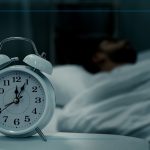Is Your Bedroom Helping or Hurting Your Sleep?

We often blame stress, hormones, or our busy schedules for poor sleep—and while those can play a role, your bedroom environment might be the silent culprit sabotaging your rest. In Cognitive Behavioral Therapy for Insomnia (CBT-I), one key component is sleep hygiene, and optimizing your environment is at the heart of it. Let’s explore how your bedroom might be helping or hurting your sleep, and what you can do about it.
The Science Behind Sleep Hygiene
Sleep hygiene refers to the habits and environmental factors that contribute to quality rest. In CBT-I, good sleep hygiene helps set the stage for restorative sleep by aligning your behaviors and surroundings with your body’s natural rhythms.
Your sleep environment matters more than you might think. Elements like temperature, light, sound, and even how you use your bed can affect the quality of your sleep—even if you’re in bed for eight hours.
Light: Timing and Exposure Matter
Your brain uses light cues to regulate melatonin, the hormone responsible for sleepiness. Bright light in the evening can delay melatonin production, keeping you wired when you should be winding down.
What to do:
- Use blackout curtains or an eye mask to keep your bedroom dark at night.
- Limit exposure to bright screens 60–90 minutes before bed.
- Get morning sunlight exposure for 15–30 minutes to reset your circadian rhythm.
Temperature: Cooler Is Better
Your body naturally cools down to prepare for sleep. A room that’s too warm can interfere with this process, leading to tossing and turning.
Ideal temperature: Around 65°F (18°C) is optimal for most people.
What to do:
- Use breathable bedding and natural fibers.
- Consider a fan or cooling mattress pad if you run hot.
- Take a warm shower 60–90 minutes before bed to trigger a drop in body temperature.
Noise: Soothing vs. Disruptive Sounds
Even subtle sounds—like a ticking clock or distant traffic—can fragment sleep cycles. But not all sound is bad. Consistent ambient sounds like rain, wind, or white noise can mask disruptions and promote deeper sleep.
What to do:
- Use a white noise machine or ambient audio.
- Try one of our downloadable audio tools designed for nightly relaxation.
- Avoid falling asleep with the TV on—changing volumes and content can disturb your sleep architecture.
Electronics: Friend or Foe?
Phones, tablets, and TVs not only emit blue light but also stimulate the brain with endless content and notifications. This can delay sleep onset and increase nighttime awakenings.
What to do:
- Remove devices from the bedroom if possible.
- Switch to night mode in the evening.
- Replace screen time with reading or light stretching before bed.
Bonus Tip: Use Your Bed Only for Sleep
CBT-I recommends using the bed only for sleep (and sex). Watching TV, working, or scrolling on your phone in bed can teach your brain that bed = wakefulness.
What to do:
- If you can’t sleep after 20–30 minutes, get up and do something calming in another room until you feel drowsy.
- Keep your bedroom a sanctuary for rest.
If you’ve been wondering why sleep still feels elusive despite clocking in enough hours, your bedroom might be part of the problem. The good news? Small environmental changes can make a big difference.
Want to take your sleep environment to the next level? Try one of our RestWell Monthly Audio Tools—featuring calming rain, wind, and low-frequency hum tracks designed to support your nightly routine.
Your environment can either fight sleep or support it. Make sure yours is working for you.
